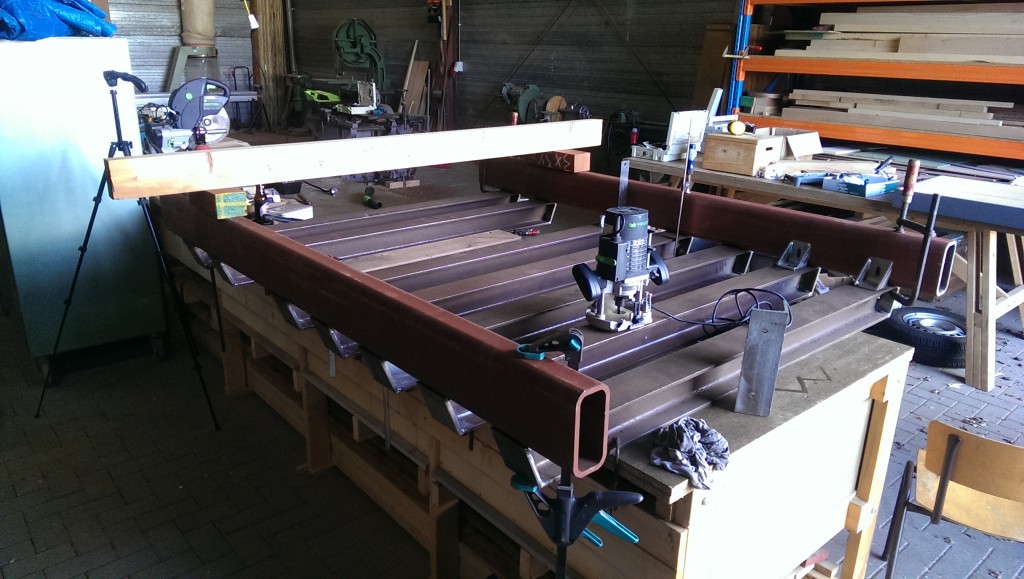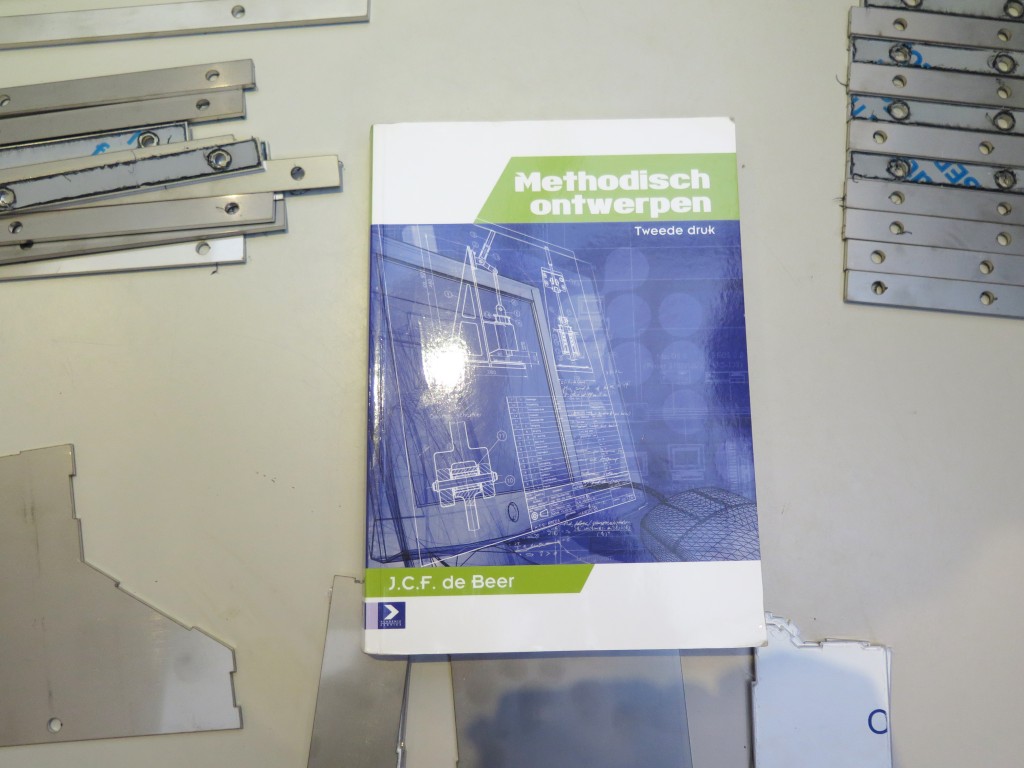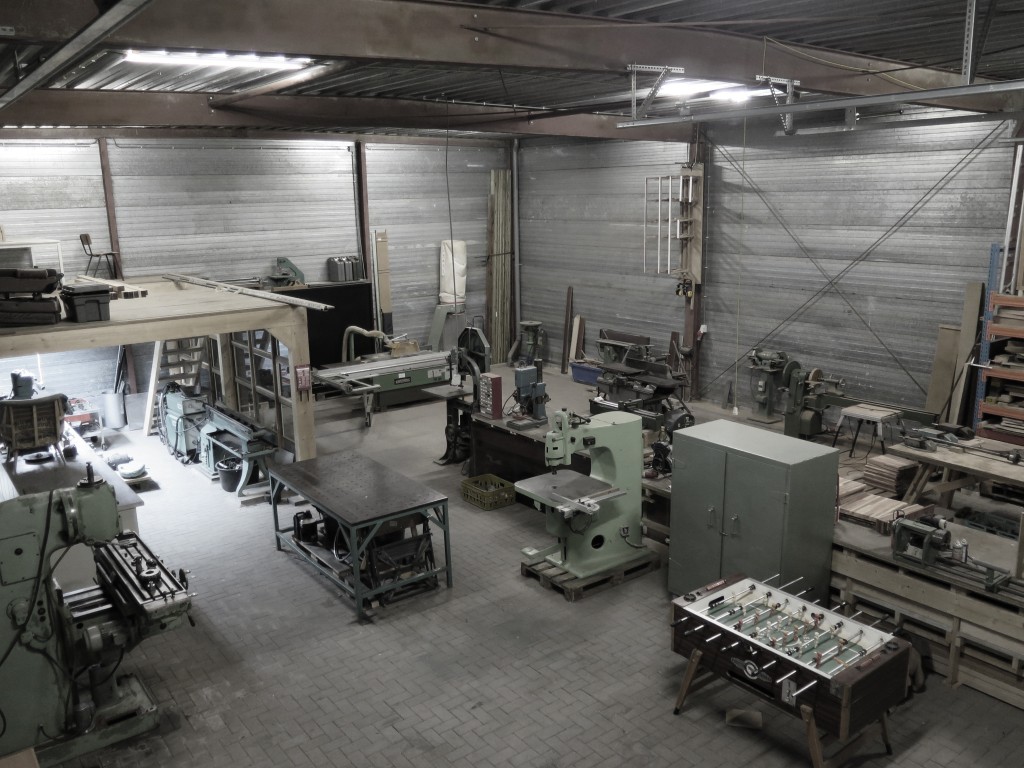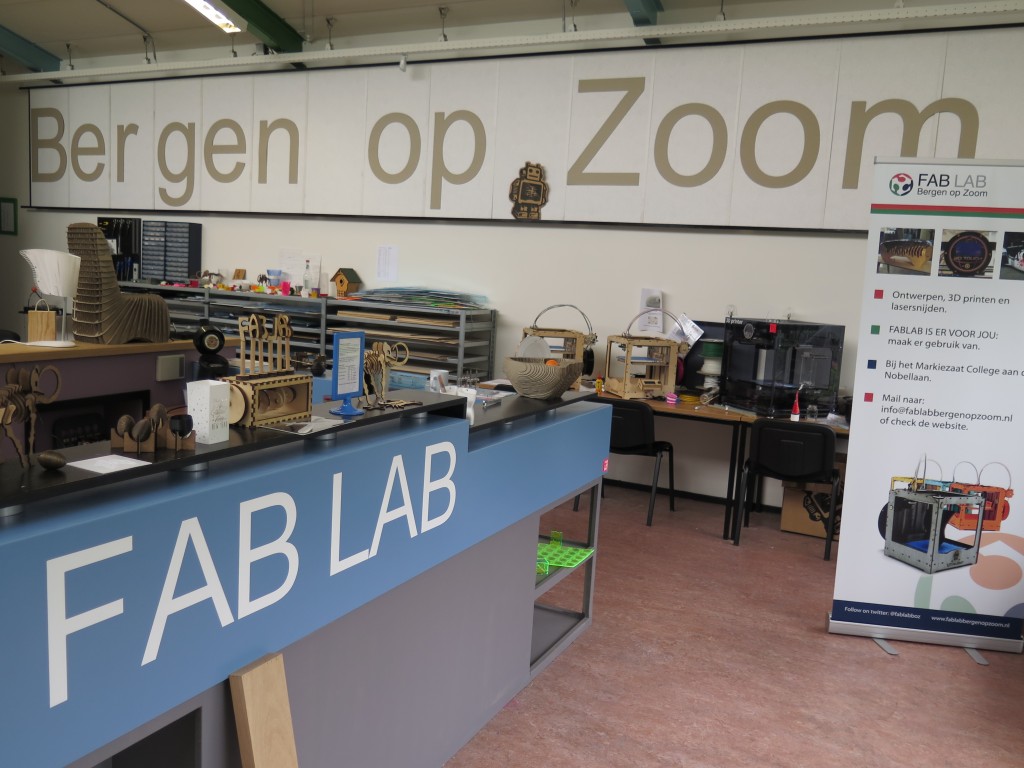Category: Geen categorie
Hans Wegner, the Chair
Korte Docu over het productieproces van the Chair (Hans Wegner). De docu laat duidelijk de afwisseling zien tussen ambacht en verschillende cnc bewerkingen.
Het bovenstaande filmpje laat eenzelfde bewerking zien als in de Hans Wegner docu. Deze copy lathe is van 1900.
Idea Technology
“He generally becomes as stupid as it possible for a human being to become”
Adam Smith
Lezing van Barry Schwartz over de ruimte voor bezieling, of het verliezen daarvan, in het werk dat we doen. Met name het stuk over Adam Smith en zijn ideeen over werknemers laat een verandering zien.
Bezoek aan studio ID, Breda
STUDIO ID is specialist op het gebied van 3D frezen,
3D scannen, reverse engineering, prototypebouw, mallen en productontwikkeling.
Voor de bouw van mijn cnc machine ben ik via marktplaats in contact gekomen met Michiel van Gremberghe. Michiel is eigenaar van studio ID in Breda en bood een set lineair geleidingen te koop aan. Deze lineair geleidingen zorgen dat de verplaatsing op de assen mogelijk is. Kortom de basis van een goede cnc machine, 3d printer of plasma snijder. Zijn achtergrond is instrument maker, zoals velen die zich vandaag de dag met cnc bezighouden.
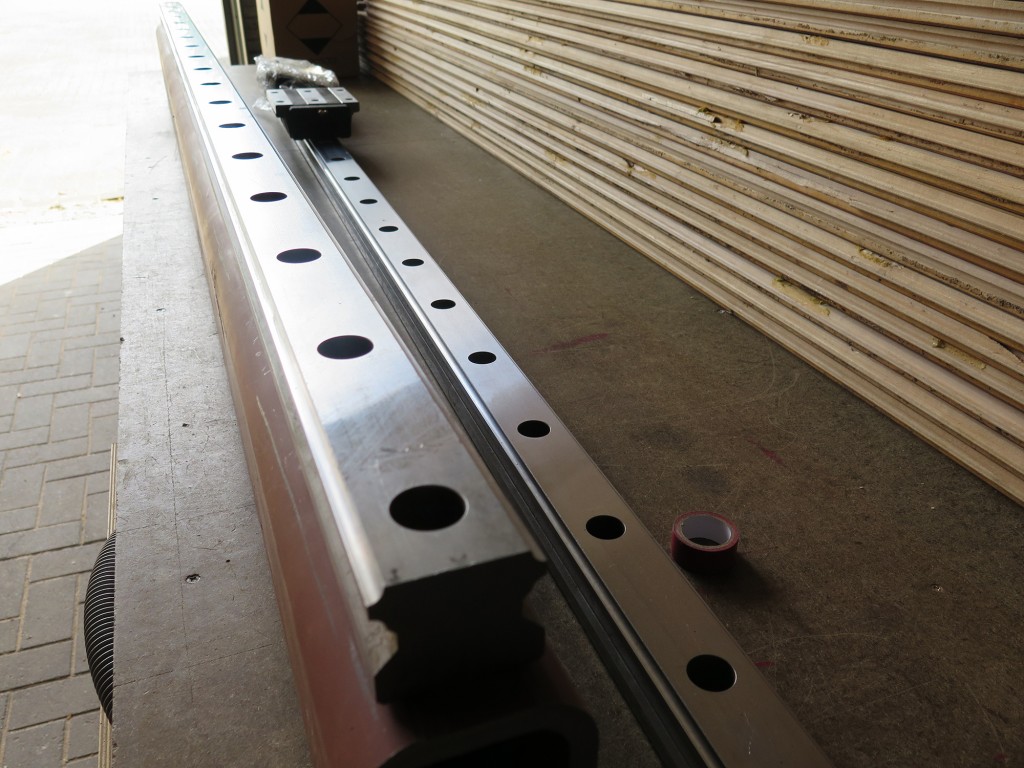 Lineaire geleidingen voor de x as.
Lineaire geleidingen voor de x as.
Tijdens ons gesprek werd vooral mijn machine onder de loep genomen. Logisch omdat ik bij hem een cruciaal onderdeel kocht, voor een niet al te geringe prijs. Naarmate het gesprek vorderde reist bij mij de vraag waar ik in hemels naam aan begonnen ben. Ik kan goed meekomen met de kennis die op diverse fora voor handen is, ik besef het principe van hedendaagse cnc machines en kan daar weloverwogen ontwerpbeslissingen in maken. Toch merk ik dat ik er voornamelijk als ‘middle man’ insta. Ik wil de productie methode in eigen beheer hebben en niet zo zeker een spoedcursus amateur werktuigbouwkunde volgen. Dit gegeven wordt me steeds duidelijker. Mijn aanpak is toch meer een creatieve aanpak die leunt op open source en lokale kennis van vakmensen. Daarnaast is de nabijheid van materiaal een grote factor, dit brengt me weer bij lokale bedrijven of marktplaats. Alles is te bestellen en als je zou willen heb je morgen een “DIY” kit in huis. Ik durf te stellen dat 90 procent van de DIY machines in europa samengesteld zijn uit componenten uit china. Mijn voorkeur gaat toch uit naar de andere aanpak.
Een bezoek aan de werkplaats van studio ID was helaas niet mogelijk vanwege de productie van een prototype. Of nu de klant dit niet wil of dat studio ID hier voorzichtig mee omgaat, het is wel een interessante situatie als je het vergelijkt met bijvoorbeeld een fab lab waar open source juist de drijvende kracht is.
In productiehuizen als studio ID of het gemiddelde fab lab merk ik dat er weinig ruimte is voor conventionele bewerkingen en de daarbijhorende ontwerpmethoden (of misschien zelfs wel ambacht) in combinatie met moderne productie methoden. Ik ervaar dit als een gemis. Ik denk dat juist de wisselwerking tussen deze twee werelden tot interessante dingen kunnen leiden. Dit neemt niet weg dat de projecten die bij studio ID de reveu passeren zeer divers zijn, dit vergt meer dan het inlezen van een plan om vervolgens de machines het werk te laten doen. Daarnaast is studio ID gesitueerd in het creatieve gebied van Breda. Het gebied/terrein geeft een volgroeide indruk. Ik vermoed dat de wisselwerking groot is tussen de diverse discplines die daar vertegenwoordigd zijn.
Tot slot kreeg ik het advies om me eens te verdiepen in het boek Methodisch ontwerpen.
Bezoek Openlucht museum Arnhem
Tijdens diverse gesprekken over mijn onderzoek komt het woord ambacht naar voren. Ik denk dat de klassieke ambachten in Nederland snel in omvang afnamen met de intrede van de industriële revolutie. Ik zie dan ook een duidelijk verschil tussen ambacht en machinale bewerkingen. Het overlapt, maar is zeker niet hetzelfde.
Om een indruk te krijgen van Nederland van voor de industriële revolutie ben ik op zoek gegaan naar ‘ouderwetse’ produktie methodes. Het openlucht museum in Arnhem heeft een indrukwekkende collectie van gedateerde productiehuizen, werkplaatsen, boerderijen, gemalen, molens etc. Veel van deze zijn gedoneerd door gemeentes door heel Nederland.
De voornaamste waarnemingen van mijn bezoek zijn de overeenkomsten in de mechanica van voor de industriële revolutie en van nu. Principes als tandwiel overbrenging zijn niet veel veranderd, althans niet binnen verspanende technieken. Bovenstaande link laat een sterke overeenkomst zien met de bewerkingen op de Tos frees.
From Bone to Satellite

Onderstaand stuk is een analyse van de openingsscene uit 2001, A space odyssey. In deze scene is te zien hoe een primaat het leiderschap over een groep neemt door middel van een bot als machtsinstrument te gebruiken. In het stuk wordt de ontwikkeling van het menselijk brein beschreven, gereedschappen/instrumenten spelen daar een belangrijke rol in.
In the legendary film ” 2001, A Space Odyssey ” (1968, directed by Stanley Kubrick and written by Arthur Clarke), there is a famous scene in which a primate – humanoid, of a herd, takes a heavy bone of a dead animal and with it threatens the primates of another herd, who are like frozen looking at him, probably not realizing the danger they have in front of them. The one who takes the bone in his hands and waves it in the air as a threatening weapon has advanced a step in the relations of domain: he has understood that, since that moment, he will dominate those of another herds, given that now he has the power to kill them. This scene would be, then, a symbolic moment of great significance in the human history.
Robert Ardrey was a screenwriter and a science writer who was born in Chicago, Illinois in 1908 and died in South Africa in 1980. He worked on scientific divulgation, specially in the areas of anthropology, pale anthropology, ethology and human evolution. In 1961 he published a book, ” African Genesis; A personal investigation into the animal origins and nature of man “. His work was based on a polemic and controversial theory exposed in the 50’s by Raymond Dart, an Australian anthropologist who was the first who discovered a fossil cranium of an “Australopithecus Africanus”.

(meer informatie in blogpost Theo Jansen)
Though this theory is not totally accepted today by the anthropologists’ community, its postulates recount to that the features of violence and aggressive instincts of the human being are an inheritance of the line of assassin predators from whom we descend; the one that could impose on the most pacific, exterminating them. That is to say, we are the descendants from the triumphant lineage, which could impose all over the rest. It’s not so far from the Biblical history of Cain and Abel, provided that according to it, we descend from the killer who exterminated his pacific brother.
According to Dart, the steps that led to human evolution, have been the enlargement of the brain mass, the acquisition of the language and the bipedalism. As soon as some primates could be erected and not need any more their hands for walking, the next important step was the opposition of the thumb to the palm of the hand: it allowed to handle some tools, and also to handle aggressive weapons. In other words, they overcame in resources to the rest of the species. Dart identifies the leading “proto-human beings”, at that time, as carnivorous, capable of hunting big animals, and probably, cannibals. This one would be the line that achieved the best conditions of survival, an alimentation with more proteins, which produced stronger descendants, the best defense of their territories and the safest protection of their children. To preserve these conditions, besides the development of the capacity of reasoning and the birth of the self-conscience, was necessary a great aggressiveness that allowed them always to impose their will upon the others.
Following the words of Robert Ardrey in African Genesis: “Man had emerged from the anthropoid background for one reason only: because he was a killer.. “……”the predatory transition [from ape to man] and the weapons fixation explained for Raymond Dart man’s bloody history, his eternal aggression, his irrational, self-destroying inexorable pursuit of death for death’s sake…” “…that remarkable killer, Australopithecus africanus, the last animal before man…our last direct ancestor in the animal world…. Man is a predator with an instinct to kill and a genetic cultural affinity for the weapon…” To conclude that human obsession with the acquisition of social status and material possessions is unrelated to the animal instincts for dominance and territory would be to press notions of special creation to the breaking point..” “If the contest exists between individuals only, then qualities of mercy and altruism will contribute nothing to a competitor’s fortune. But if the contest is between societies, then the member of a successful society must develop two sets of emotional responses: the many facets of friendship and co-operation reserved for members of his own society [“amity”], and the many facets of hostility and enmity for members of the opposing society..” “No man can regard the way of war as good. It has simply been our way. No man can evaluate the eternal contest of weapons as anything but the sheerest waste and the sheerest folly. It has been simply our only means of final arbitration. Any man can suggest reasonable alternatives to the judgment of arms. But we are not creatures of reason except in our own eyes…” …the superior weapon, throughout the history of the species, has been the central human dream…deprived of the dream, deprived of the dynamics, deprived of the contest [for superior weapons], and deprived of the issue [of a weapons’ contest], Homo sapiens stands on a darkened threshold through which species rarely return…” ” We are a transitional species, without doubt. We are a pioneer creature testing the potentialities of the enlarged brain. . . . And if we do not behave too badly, then we shall pass on the power of thought, one day, to a descendant species who may count it a part of their animal endowment. They, not we, can found kingdoms on its strength.”
A polemic, controversial hypothesis, undoubtedly. It shakes us for the crudeness of the exhibition. But it only happens because of our homo-centric vision, that does not allow us to be aware of the truth of our trends and our origins. We use the term “humans” to define something good, altruistic. And the term “animal” to define something wild. So, there is no animal who kills himself and kills his whole family in an act of irrationality, since it happens only between the human beings. In turn, amongst the animals many altruistic and cooperative behaviors can be noticed . If we do not undress our myopic anthropocentrism – even in the language-, we will never be able to be aware of what our failure as species is, and what we should correct.
These topics have been developed by many authors, like the ethologist Konrad Lorenz, ” On Aggression ” (1966) and the German psychologist Erich Fromm, ” The anatomy of human destructiveness”, in 1973. Whether we agree or not with these postulations, if we should integrate these arguments as a philosophical theory, is just a matter of discussion. What we cannot deny is that, if the solution to the eternal problem of the human aggression is a point of reflection where we could understand that the mutual cooperation is a better business than the destruction of the others, on having assumed this point of reflection, we will have given another important step forward in the human evolution.
Pablo Briand, June 23rd 2009.
Bewerkingen op Tos mill 1969
Naar aanleiding van meerdere gesprekken met diverse instrumentmakers ben ik tot de volgende bewerkingen overgegaan.
De bewerkingen die je hier ziet zijn om het frame van de machine haaks en vlak te krijgen. Het streven qua precisie is tienden tot honderdsten van een mm.
De machine waar dit opgebeurt is een Tos fa3av. Een metaal freesbank met een groot bereik. Bouwjaar 1969. Tsjechoslowakije. Deze machine wekt over het algemeen veel positieve reacties/herinneringen op bij vaklieden die hier ooit mee gewerkt hebben. Advies rolt er vervolgens vanzelf uit.
Tijdens de (voor mij) zeer interessante lezing in Tropicana spreekt Ed mij kort aan. “Ik moet een afspraak met jou maken”. Mijn reactie is dat het volgens mij andersom is en vraag hem in welke stad hij woont zodat we daar eventueel kunnen afspreken. ‘Nee ik kom naar jou toe, ik wil die werkplaats zien’.
Tijdens ons afspraak in Tholen merk ik dat het gesprek in eerste instantie wat verkennend is, van beide partijen. Op kantoor bespreken we mijn onderzoeksgebied. Productie methoden (lokaal vs globaal) en digitale productie processen. De huidige vorm (fablabs) daarvan en de kwaliteit daarvan. Mijn fascinatie voor x y z principes. Ed wijst me op een aantal nader te noemen artiesten en geeft een aantal voorbeelden van vroege 3d printers.
Vervolgens bezoeken we de werkplaats. Hier wordt het Ed meer duidelijk waar mijn fascinatie ligt en dat dit niet per se ambachtelijk is. Het produceren van eigen ideeen wordt al snel als ambachtelijk gezien terwijl mijn ontwerp- productiemethode over het algemeen meer industrieel van aard is. Het advies is dan ook om het ambachtelijke een stuk minder te belichten binnen mijn onderzoek.
Met name de onderlinge relatie tussen de machines fascineert Ed. De werkplaats als een familie waar de ene machine de andere aanvult en vice versa. Ik leg uit dat het hout gedeelte voornamelijk de kostwinnaar is en dat het metaalgedeelte de werkplaats ondersteunt en laat uitbreiden. Dit brengt ons tot het ontwerp van de cnc machine. Ik benoem dit tot nu toe als een ‘conversation piece’ binnen mijn onderzoek. Ed is het daar niet mee eens en legt uit dat het meer is dan een conversation piece. Het laat logica,structuur en proces zien.
Na alle aspecten van de werkplaats te hebben doorgenomen neemt Ed een tweetal foto’s. Een van de Japanse trekzaag. Het is dan ook geen toeval dat dit mijn lichtste en tevens meest ambachtelijke instrument uit de werkplaats is. Deze druk je uit in grammen, niet in kilo’s.
En vervolgens een van de TOS (czechoslovakia) freesbank. De minst ambachtelijke. Deze druk je dan weer uit in tonnen, ook niet in kilo’s
The Craftsman by Richard Sennett
In mijn werkplaats (the Mint) ben ik op dit moment een cnc frees aan het bouwen. Dit is een project dat ik geinitieerd heb en waar een aantal lokale partijen bij betrokken zijn. Met name mensen uit meer toegepaste beroepen, lees een lasser, draaier en een elektricien. In een later stadium zal er ook een programmeur bij betrokken worden.
Naast de physieke mogelijkheden (machines, materiaal en een werkplaats) is toegepaste kennis een belangrijk aspect. Mijn voornaamste bronnen zijn tot nu toe vaklieden uit de regio en een aantal toonaangevende sites op het gebied van machines en cnc technologien: Practicalmachinist.com en Cnczone.nl
Om mijn ontwerp en plan van aanpak nog een keer goed onder de loep te nemen heb ik contact gehad met de instrumentmaker van het voormalige Natlab in Eindhoven. Deze instrumentmaker is op dit moment betrokken bij het fablab in Bergen op Zoom.
Omdat ik dit moment in de constructie fase zit heb ik voornamelijk informatie ingewonnen over het vlakken van het frame. Het formaat in combinatie met de beoogde tollerantie levert de grootste uitdaging op.
